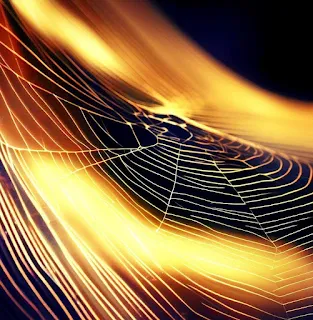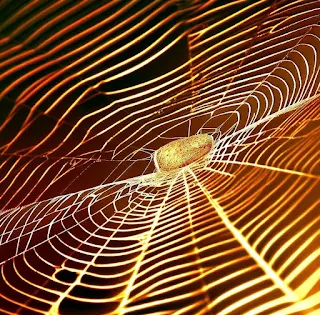The Weaver of Sunlight: Folklore Meets Science in Africa’s Golden Silk Spider
The Weaver of Sunlight: Folklore Meets Science in Africa’s Golden Silk Spider
The Legend of the Sun Weaver
In the beginning, the people said the Sun grew tired of shining alone. So, it called upon a small creature to help scatter its light across the world. The creature, humble and patient, spun threads from its belly that caught the sunlight and held it captive in shimmering gold. That creature was the Golden Silk Spider, known in stories as the Weaver of Sunlight.
Children were told that when the morning rays hit the trees just right, the Sun Weaver was mending the sky, stitching daylight into the corners of the world. No one feared her then — for her web was a promise of balance and order, spun from the same light that warms the earth.

The Science of the Golden Threads
The Golden Silk Orb-Weaver (Nephila) transforms proteins inside its body into one of nature’s most advanced materials. Its silk begins as a liquid stored in spinneret glands. When drawn into air, it solidifies — a perfect blend of elasticity and strength stronger than steel by weight.
Scientists have discovered that the spider’s dazzling yellow hue comes from natural pigments inside the silk glands. These pigments not only reflect sunlight but also protect the web from ultraviolet radiation. Some researchers suggest that the golden color acts as camouflage among leaves or as a lure to attract prey dazzled by the shimmering web.
The web’s structure itself follows mathematical precision. Concentric spirals and radial lines stretch over three feet wide, echoing the same geometry found in galaxies, shells, and storms. Even in darkness, the Golden Silk Spider builds by feel — its eight legs measuring perfect symmetry through vibration and touch.

Folklore Meets Ecology
While storytellers speak of sunlight trapped in thread, scientists celebrate the spider’s ecological genius. By capturing insects such as flies, moths, and beetles, these spiders regulate pest populations and sustain balance in ecosystems from Kenya to Madagascar. Their silk has even inspired African innovators studying biodegradable fibers for use in medicine and technology.
Across Africa, the spiral of a spider’s web mirrors the cycles of nature — construction, destruction, renewal. This symmetry links to proverbs like, “The web you fear may be the light that catches the morning,” reminding us that even the smallest creatures weave beauty from purpose.
The Truth Beneath the Fear
Though many find spiders unsettling, the University of Florida notes that the Golden Silk Spider poses little danger. Its bite is mild — less severe than a bee sting — and it rarely bites unless provoked. Fear of spiders, scientists say, may have evolved as a survival instinct, but admiration can evolve too.
To hate the spider but praise its silk is to miss the point. Both are part of the same creation — an architect and its masterpiece. Like many African folktales teach, what seems frightening may only be misunderstood.
To discover how African folklore often mirrors natural science, read Spirals of Life: African Folklore Meets Science — where whirlwinds, horns, and aloe leaves reveal nature’s hidden equations.
🌍 Folklore Meets Science — African Stories that Explain the Universe
Where African mythology and natural science meet — revealing how ancient wisdom explained the forces of nature long before modern discovery.
🔭 Explore the Folklore Meets Science SeriesContinue exploring Folklore Meets Science — stories where African mythology and modern discovery walk hand in hand.


